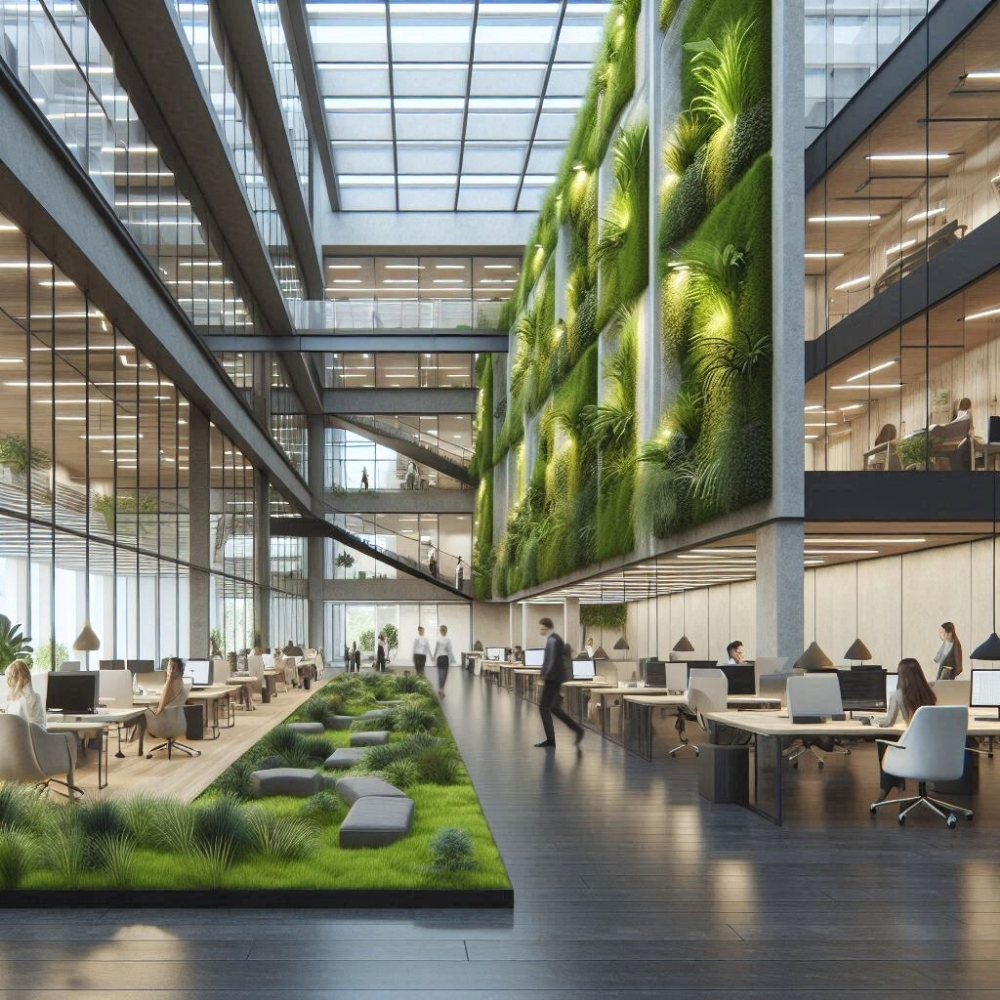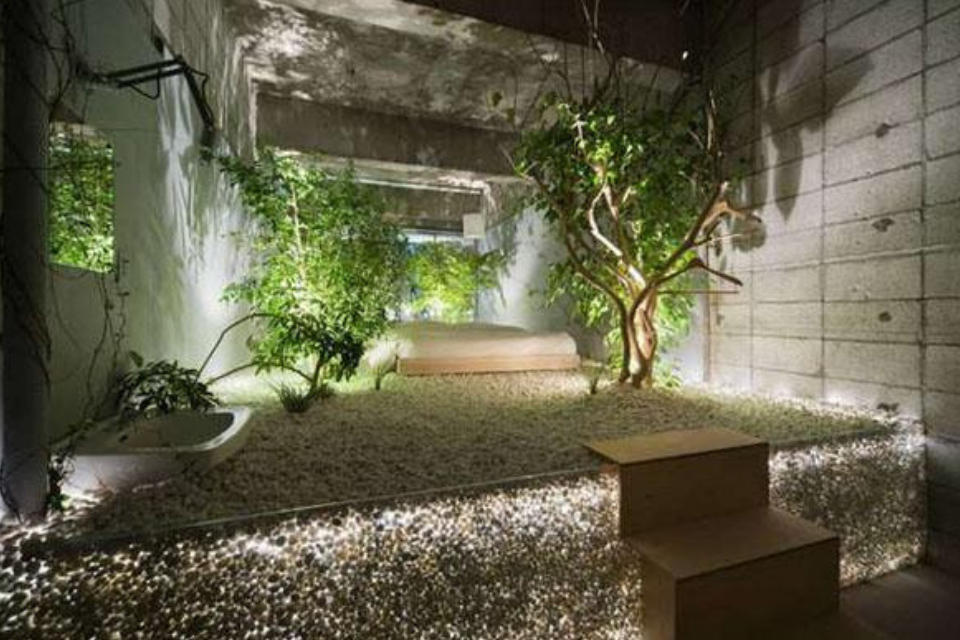Why Biophilic Design is Essential for Today’s Architects and Interior Designers
The design industry is changing. Today’s clients want more than beautiful and functional spaces; they expect sustainable environments that actively promote health and wellness. That’s why biophilic design for architects and interior designers has become a core strategy for shaping the spaces of the future.
By connecting people with nature through light, materials, greenery, and living systems, professionals can transform how people experience the built environment. As Stephen Kellert, a pioneer in the field, noted, humans have an innate need to connect with nature, and design plays a critical role in fulfilling that need (Kellert, Heerwagen, & Mador, 2008). For professionals looking to stay ahead, integrating biophilic design into projects isn’t just beneficial—it’s essential.
Directory
What is Biophilic Design? A Guide for Design Professionals
Beyond a Trend: The Future of Biophilic Design
Why Biophilic Design Matters: Benefits for Architects & Interior Designers
Biophilic Design Ideas & Real World Applications
The Imperative for Professional Development: CEU Courses
Biophilic Design is The Future of The Built Environment
What is Biophilic Design? A Guide for Design Professionals
Biophilic design is the practice of intentionally connecting people with nature within built environments to improve human well-being, productivity, and sustainability. It represents a fundamental shift in architecture and design, utilizing natural light, materials, plants, and natural patterns to foster a stronger connection between humans and nature.
Rooted in humanity's innate biological connection to nature, biophilia suggests that our health and mental wellness suffer from the profound disconnection brought about by urbanization and industrialization. Today, with the average person spending up to 90% of their time indoors, understanding and implementing biophilic design is crucial for architects and interior designers to create spaces that support human well-being, productivity, and sustainability (Architizer)
Terrapin Bright Green’s “14 Patterns of Biophilic Design” (2014) provides a framework that includes:
- Access to natural light
- Use of plants, living walls, moss walls, and natural textures
- Natural materials like wood, stone, and clay
- Views to the outdoors or integration of water features
- Patterns, forms, and shapes inspired by the natural world
These elements are more than aesthetic choices. Research published in the Journal of Environmental Psychology shows that environments designed with natural features improve focus, reduce stress, and increase overall well-being.
Beyond a Trend: The Future of Biophilic Design
Beyond being a trend, biophilic design is grounded in evidence that proves its positive impact on human health. The movement is currently at a "tipping point," transforming cities, homes, and workplaces globally (Global Wellness Summit). This surging demand is driven by a heightened awareness of nature's value, making biophilic design a necessity, not a luxury.
Why Biophilic Design Matters: Benefits for Architects & Interior Designers
Health and Wellness Benefits
Design directly impacts the people who use a space. A landmark study by Roger Ulrich (1984) found that hospital patients recovered faster and required less pain medication when they had a view of trees. More recently, the Harvard T.H. Chan School of Public Health confirmed that green, healthy buildings improve cognitive function and reduce stress.
- For interior designers, integrating features such as moss walls or nature-inspired textures enhances user comfort and emotional well-being.
- For architects, large-scale strategies like daylight optimization, green roofs, and living walls support both aesthetics and performance.
Together, these approaches create environments that feel restorative and uplifting.
Meeting Sustainability Goals (LEED & WELL)
Biophilic design is closely tied to sustainable design strategies. Incorporating natural light, plants, and greenwalls supports certifications like LEED (U.S. Green Building Council) and the WELL Building Standard (International WELL Building Institute). These frameworks recognize the value of natural elements in creating healthier, more sustainable spaces.
-
For architects, this means designing buildings that perform better environmentally.
-
For interior designers, it means specifying finishes, furnishings, and green features that align with sustainability and wellness goals.
Responding to Client Demand
From luxury homes to corporate offices and senior living communities, clients increasingly expect green design ideas and plant design ideas. Developers and businesses view biophilic features as investments in both well-being and property value. For both architects and interior designers, fluency in biophilic design is crucial for meeting these evolving expectations and standing out in competitive markets.
Biophilic Design Ideas & Real-World Applications
Biophilic design applies across industries and at multiple scales, from building-wide features to interior finishes. Here are some real-world biophilic design ideas:
-
Corporate Offices: Living greenwalls and daylighting strategies enhance productivity and employee well-being (Harvard T.H. Chan School research).
-
Healthcare Facilities: Greenwall systems and natural light create restorative spaces, echoing Ulrich’s findings on healing environments.
-
Senior Living Communities: Moss walls and natural textures foster a sense of calm and belonging (Journal of Environmental Psychology).
-
Hospitality Spaces: Hotels use dramatic living plant wall installations as Instagram-worthy focal points that delight guests.
-
Luxury Residences: Homeowners are requesting nature-inspired features not only for relaxation but also for added resale value, as highlighted by publications like Dezeen and Architectural Digest.
These examples prove that biophilic design isn’t theoretical; it’s actively shaping spaces today.
The Imperative for Professional Development: CEU Courses
As the demand for biophilic and sustainable design solutions continues to grow, staying current with continuing education for architects and designers is critical. Insights from professionals show a strong desire for deeper, hands-on knowledge in areas such as technical design and installation of greenwalls, plant selection, and understanding sustainability certifications.
Learning about biophilic design through accredited AIA CEU and IDCEC CEU courses equips professionals with the expertise to transform ambitious visions into high-performing, sustainable realities. This not only fulfills licensure requirements but also provides the skills needed for confident specification and seamless integration.
For architects and interior designers, fluency in biophilic design is crucial for meeting these evolving expectations, differentiating their portfolios, strengthening proposals, and standing out in a competitive market.
How Does Learning About Biophilic Design Benefit Design Professionals?
For design professionals, biophilic design is more than a client request; it’s a pathway to innovation.
- Differentiate your portfolio: Showcase projects that feature living plant walls, preserved moss, or natural finishes to demonstrate expertise in wellness-focused design.
- Gain a competitive edge: As RFPs increasingly prioritize sustainability and wellness, being proficient in biophilic strategies strengthens your proposals.
- Deliver client satisfaction: Whether designing a hospital lobby or a luxury residence, you’re not only creating beauty, you’re designing healthier, more inspiring environments.
The Role of CEU Courses in Biophilic Design
For both architects and designers, staying current with continuing education is critical. CEU courses help maintain licensure while building in-demand expertise.
GrowUp Greenwalls offers AIA and IDCEC-accredited CEU courses designed for professionals who want to:
- Earn CEU credits efficiently
- Learn practical applications of biophilic design
- Gain insight into living plant walls, preserved moss systems, biophilic design principles, and sustainable design strategies
- Anticipate biophilic design trends shaping the future of design
Whether you’re an architect focused on structural integration or a designer curating interiors, CEU training ensures you can confidently incorporate biophilia into your projects.
Why Choose GrowUp’s CEU Courses?
- Accredited & recognized: CEUs approved by AIA, IDCEC (CIDQ, IDC, IIDA, ASID), BOMI, IWBI, and GBCI.
- Tailored to the design community: Courses are built with both architects and interior designers in mind.
- Expert-led: Instructors bring years of experience designing and installing greenwall systems.
- Flexible delivery: Live webinar sessions and firm-wide in-person trainings make learning accessible.
By investing a few hours in professional development, you’ll not only fulfill CEU requirements—you’ll also gain strategies that enhance your work and elevate client outcomes.
Conclusion: Biophilic Design Is the Future of the Built Environment
Biophilic design is no longer optional; it’s an essential part of creating healthier, more sustainable, and inspiring spaces. For architects and interior designers alike, learning how to integrate natural systems into the built environment is both a professional responsibility and a competitive advantage. With the right training, you can stay ahead of client demands, meet CEU requirements, and lead the industry toward a greener future.
GrowUp Greenwalls CEU Course Availability
Explore GrowUp’s accredited CEU courses today and start elevating your practice through biophilic design.
All courses are accredited by AIA, IDCEC (CIDQ, IDC, IIDA, ASID), BOMI, IWBI, & GBCI.
-1.jpg)
GET CEU CREDIT NOW
Online CEU Courses
GrowUp Greenwalls Online Continuing Education Courses
Advanced Living Walls with Case Studies offers a global overview of living plant wall systems, detailing their benefits and pitfalls through case studies.
Moss Walls: A Biophilic Design Solution explores preserved moss walls as an interior design solution and how they benefit architectural projects.
Nature's Blueprint: Unleashing the Power of Biophilic Design investigates the connection between people and nature and provides a method for integrating biophilic design into architectural spaces.
Authentically Green Interiors: Optimizing Nature's Design is a research-based study on how plants impact people's physical, psychological, and behavioral needs.
Got Questions? We've Got Answers
What is the difference between biophilic design and green design?
Biophilic design focuses on connecting humans with nature for improved well-being, while green design primarily focuses on the environmental sustainability of a building. The two approaches often overlap, as natural elements can also contribute to a building's energy efficiency and sustainability.
How does biophilic design improve well-being?
Biophilic design improves well-being by reducing stress, increasing productivity, and enhancing cognitive function. Elements like natural light, indoor plants, and natural materials have been scientifically proven to create more restorative and inspiring environments for people.
What are some low-maintenance biophilic design ideas?
Popular low-maintenance options include preserved moss walls, which require no water or sunlight, and strategically placed plant selections. Other ideas include using natural wood, stone, and clay textures in the design, which are inherently low-maintenance.
Are GrowUp CEU courses accredited?
Yes, all of our continuing education courses are accredited and approved by the American Institute of Architects (AIA) and the International Design Continuing Education Council (IDCEC) , as well as BOMI, IWBI, GBCI, CIDQ, IDC, IIDA, and ASID, to help you fulfill your professional licensing requirements.
What topics are covered in a biophilic design CEU course?
GrowUp currently offers four CEU courses that cover different topics:
Advanced Living Walls with Case Studies provides an overview of the different living plant wall systems on offer around the world. The course provides helpful details about particular case studies, showing the benefits and pitfalls of an array of different systems.
Moss Walls: A Biophilic Design Solution looks at preserved moss walls as a solution in interior design and architecture and how they benefit the projects they are in.
Nature's Blueprint: Unleashing the Power of Biophilic Design explores the connection between people and nature and provides a methodology to integrate biophilic design into architectural and interior design spaces.
Authentically Green Interiors: Optimizing Nature's Design is a study on human-centered design, taking a research-backed view on the impact plants have on people's physical, psychological, and behavioral needs.
How can I earn CEU credits?
You can earn CEU credits by attending a live CEU-accredited training session, either in person or online. GrowUp offers live webinars and online or in-person firm-wide training sessions. Simply attend the course and a short quiz to receive your certificate for credit.
Register for a free GrowUp Greenwalls CEU training now at www.growup.green/training.
.jpg)


-1.jpg)